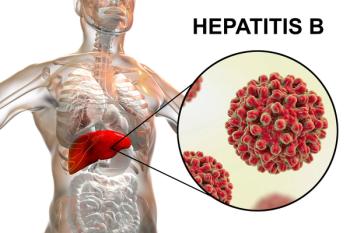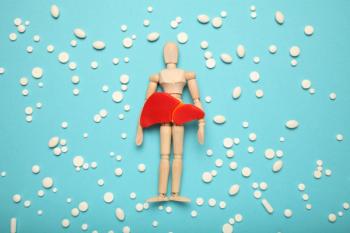
Prevalence of Hep C Higher Among TGD Individuals
Other research has come to a similar conclusion, but this study used an insurance claims database to make a more rigorous comparison between transgender and gender-diverse (TGD) people and cisgender individuals.
Hepatitis C is among the most common bloodborne viral infections affecting approximately 4 million Americans, according to the Centers for Disease Control and Prevention. Transgender and
A Yale School of Medicine and the Yale Center for Medical Informatics research article added to the evidence that TGD individuals are more likely to be tested for and diagnosed with hepatitis C than cisgender women and men.
“Although testing was higher among transgender and gender-diverse individuals, the higher overall frequency of HCV (hepatitis C virus) diagnosis among transgender and gender-diverse than among cisgender individuals signals persistent health disparities,” wrote lead author
Earlier HCV studies that included TGD populations primarily relied on convenience-based sampling methods or were geographically restricted, according to the Yale researchers. For example, epidemiologic data from geographic studies found a 9% HCV prevalence among transfeminine individuals in a Los Angeles-based sample and 24.8% in a San Francisco sample.
HCV prevalence studies among transmasculine individuals are more limited, according to the author. Domestic and global estimates, however, range from 1% to 8%.
To get a clearer picture of HCV prevalence among TGD individuals, the Yale team employed new developments in algorithms that allowed researchers to study health disparities by gender identity where self-identified gender is lacking.
The researchers used Optum's de-identified Clinformatics Data Mart Database national insurance claims data set to estimate the prevalence of HCV diagnoses and testing among TGD versus cisgender adults from 2001 to 2019. The data included claims from private insurance and Medicare Advantage plans.
Data from insurers adhering to Medicare guidelines offered by private companies for roughly 84 million people nationwide was also included.
Wolfe and colleagues also looked at people who inject drugs (PWID) and compared TGD and cisgender individuals in that group. HCV is most often spread by sharing or reusing non-sterile needles and injection equipment.
A total of 38,598 unique TGD individuals were identified and a 10% random sample of more than 10 million cisgender individuals. Most individuals were from the South, with the least being from the Northeast. A majority of the sample was identified as non-Hispanic (52.66% overall and 67.05% among PWID), followed by unknown race/ethnicity (25.54% overall and 12.24% among PWID).
The overall unadjusted results revealed the prevalence of HCV diagnosis among the TGD population was three times higher than the prevalence among cisgender individuals, 1.06% versus 0.38%. Among difference among people who inject drugs was similar, 6.36% for TGD individuals versus 2.36% among cisgender ones.
Transfeminine/nonbinary people had over five times the adjusted odds of an HCV diagnosis compared to cisgender women.
Wolfe writes that even after adjusting the results for demographic and other issues, TGD individuals without a history of injection drugs are significantly more likely to have been diagnosed with HCV than any other group.
“Policies, guidelines, and interventions should also be developed to ensure equitable access to care for TGD and cisgender populations living with or at risk for HCV,” Wolfe and his colleagues concluded.
Newsletter
Get the latest industry news, event updates, and more from Managed healthcare Executive.






















































